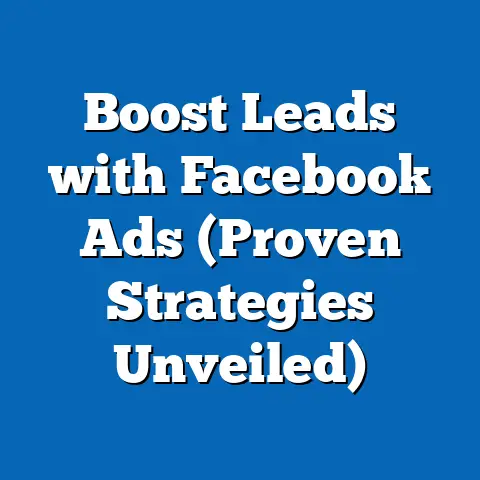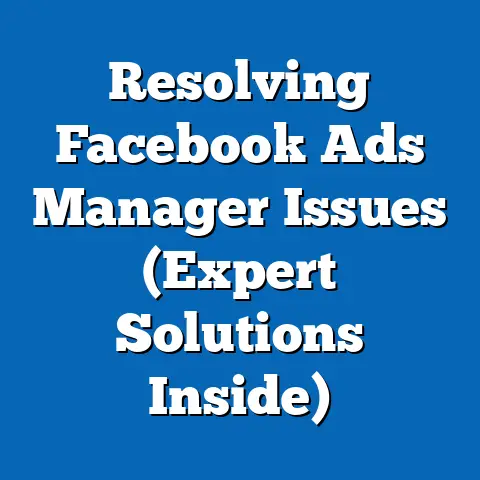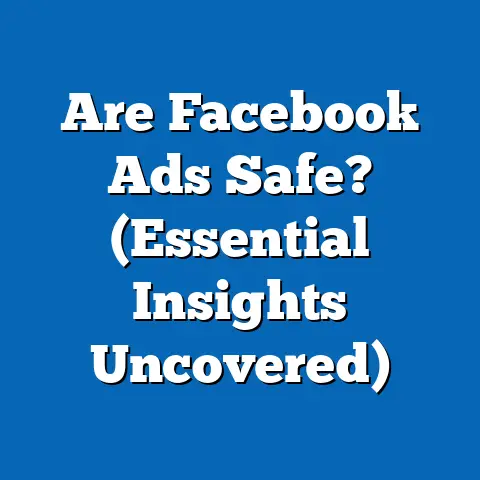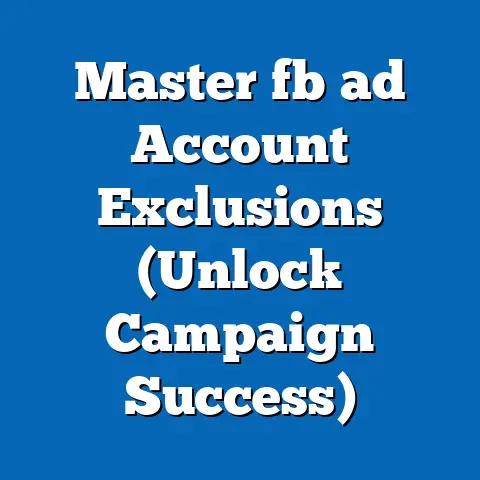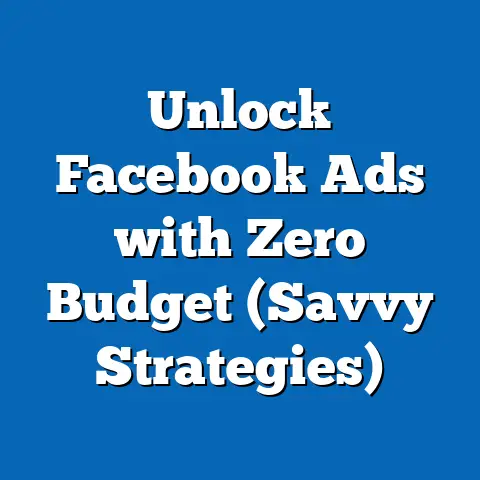Create Irresistible Facebook Ads for Restaurant (Pro Tips)
The aroma of sizzling garlic, the vibrant colors of a perfectly plated dish, the cozy ambiance of a bustling dining room – these are the sensory experiences that draw customers to restaurants. But in today’s digital age, capturing that same allure online, amidst a sea of competing content, can feel like an impossible feat. I’ve seen countless restaurant owners struggle to effectively use Facebook ads, often feeling overwhelmed and unsure where to start. The good news? With the right knowledge and strategies, you can transform your Facebook ads from a costly expense into a powerful engine for attracting hungry customers, driving foot traffic, and boosting online orders. This article will arm you with actionable tips and pro insights to create truly irresistible Facebook ads that will make your restaurant the talk (and taste) of the town.
Understanding Your Audience: Know Your Diner
Before you even think about crafting your first ad, it’s crucial to understand who you’re trying to reach. Too often, I see restaurants casting a wide net, hoping to catch anyone who happens to be hungry. But that’s like using a shotgun to catch a specific fish – inefficient and wasteful. You need to know your ideal customer, their preferences, and their online behavior.
Think about it: a trendy burger joint targeting college students will have a vastly different approach than a fine-dining establishment targeting affluent professionals.
Demographic Details Matter:
- Age: Are you targeting young adults, families, or seniors?
- Location: Focus on local diners within a specific radius of your restaurant.
- Dining Preferences: What kind of cuisine do they enjoy? Are they health-conscious, adventurous eaters, or comfort food aficionados?
- Interests: What are their hobbies and interests outside of food? This can give you clues about their lifestyle and values.
- Income: This will influence their dining budget and the type of restaurant they frequent.
Crafting Customer Personas:
Go beyond basic demographics and create detailed customer personas. Give them names, backstories, and motivations. For example:
- “Sarah, the Busy Professional”: A 30-year-old marketing manager who enjoys trying new restaurants and sharing her experiences on social media. She values convenience and healthy options.
- “Mark, the Family Man”: A 45-year-old father of two who’s looking for kid-friendly restaurants with good value. He appreciates a relaxed atmosphere and classic American cuisine.
- “Emily, the College Student”: A 20-year-old college student who’s on a tight budget and looking for cheap eats and fun social experiences. She’s drawn to trendy spots with Instagrammable food.
By creating these personas, you can tailor your ad content to resonate with specific segments of your audience. I find that this focused approach yields significantly better results than generic ads.
Key Takeaway: Invest time in understanding your audience. Create detailed customer personas to guide your ad creation process.
Crafting Engaging Visuals: A Feast for the Eyes
In the fast-scrolling world of Facebook, visuals are your first and often only chance to grab attention. Think of your ads as miniature billboards. If they don’t immediately capture the eye, they’ll be lost in the noise. I’ve seen restaurants completely transform their ad performance simply by upgrading their visuals.
Food Photography Tips:
- Natural Lighting is Your Best Friend: Avoid harsh artificial lighting, which can make food look unappetizing. Shoot near a window or outdoors on a cloudy day.
- Plating Matters: Presentation is key. Arrange your dishes artfully, paying attention to color and texture.
- Focus on the Details: Use a macro lens to capture the textures and details of your food. Close-up shots of a perfectly grilled steak or a decadent chocolate cake can be incredibly enticing.
- Action Shots: Capture moments of people enjoying your food. A smiling customer taking a bite of a burger or a group of friends sharing a pizza can create a sense of connection and desire.
The Power of Video:
Video is an incredibly powerful tool for showcasing your restaurant. I’ve personally seen video ads generate significantly higher engagement rates than static images.
- Showcase Your Dishes: Create short videos that highlight your most popular dishes. Use close-up shots and mouthwatering descriptions to tempt viewers.
- Behind-the-Scenes Look: Give viewers a glimpse into your kitchen and the passion that goes into your food. This can create a sense of authenticity and connection.
- The Dining Experience: Capture the ambiance of your restaurant. Show happy customers enjoying their meals and the overall atmosphere.
Carousel Ads: A Visual Smorgasbord:
Carousel ads allow you to showcase multiple images or videos in a single ad unit. This is a great way to highlight different dishes, the restaurant’s interior, and customer testimonials. I often recommend carousel ads to restaurants with diverse menus.
Key Takeaway: Invest in high-quality visuals that showcase your food and restaurant in the best possible light. Use video to create a more engaging and immersive experience.
Writing Compelling Copy: Words That Whet the Appetite
While visuals are crucial for grabbing attention, the words you use in your ad copy are what ultimately persuade people to take action. Your copy should be clear, concise, and compelling, highlighting the benefits of dining at your restaurant. I’ve seen many beautifully designed ads fall flat because the copy was bland and uninspired.
Persuasive Language:
- Focus on the Benefits: Don’t just describe your food; tell people how it will make them feel. Instead of saying “We serve delicious burgers,” try “Indulge in our juicy, mouthwatering burgers that will satisfy your cravings.”
- Use Sensory Language: Appeal to the senses with words that evoke taste, smell, and texture. “Imagine the aroma of freshly baked bread filling the air” or “Savor the creamy texture of our homemade gelato.”
- Create Urgency: Use phrases like “Limited-time offer,” “Book your table now,” or “Don’t miss out” to encourage immediate action.
Calls to Action (CTAs):
Your ad should always include a clear and compelling call to action. Tell people exactly what you want them to do.
- “Order Now”: For online orders and deliveries.
- “Book a Table”: For reservations.
- “View Menu”: To showcase your offerings.
- “Learn More”: To provide more information about your restaurant.
Catchy Headlines and Taglines:
Your headline is the first thing people will see, so make it count. It should be attention-grabbing and relevant to your target audience.
- “Craving Authentic Italian? Look No Further!”
- “The Best Burgers in Town, Guaranteed!”
- “Experience the Flavors of [Your Region] at [Your Restaurant Name].”
Example Ad Copy:
“Escape the ordinary and treat yourself to a culinary adventure at [Your Restaurant Name]. Indulge in our freshly made pasta dishes, crafted with authentic Italian ingredients. Book your table now and experience the taste of Italy! 🇮🇹 -> [Link to Reservation Page]”
Key Takeaway: Craft compelling ad copy that highlights the benefits of dining at your restaurant, uses persuasive language, and includes a clear call to action.
Utilizing Targeting Options: Reaching the Right Diners
Facebook’s targeting options are incredibly powerful, allowing you to reach specific segments of your audience with laser-like precision. I’ve seen restaurants significantly improve their ROI by leveraging these targeting capabilities. It’s not about reaching everyone; it’s about reaching the right people.
Custom Audiences:
Create custom audiences based on your existing customer data, such as email lists or website visitors. This is a great way to retarget people who have already shown interest in your restaurant.
Lookalike Audiences:
Expand your reach by creating lookalike audiences based on your custom audiences. Facebook will identify users who share similar characteristics and interests with your existing customers.
Retargeting Strategies:
Retargeting allows you to show ads to people who have previously interacted with your restaurant online, such as visiting your website or viewing your menu. This is a highly effective way to drive conversions.
Geo-Targeting:
Focus your ads on local diners within a specific radius of your restaurant. This is essential for driving foot traffic.
Interest-Based Targeting:
Target users based on their interests, such as “Italian Food,” “Fine Dining,” or “Local Restaurants.”
Example Targeting Strategy:
- Create a custom audience based on your email list of existing customers.
- Create a lookalike audience based on that custom audience.
- Use geo-targeting to target users within a 5-mile radius of your restaurant.
- Target users who have expressed an interest in Italian food and local restaurants.
Key Takeaway: Leverage Facebook’s targeting options to reach the right audience with your ads. Use custom audiences, lookalike audiences, retargeting, and geo-targeting to maximize your ROI.
Timing Your Ads: When to Serve Up Your Message
Timing is everything, especially when it comes to restaurant advertising. You want to reach people when they’re most likely to be thinking about food and dining out. I’ve seen restaurants boost their reservations and online orders simply by optimizing their ad scheduling.
Weekends and Holidays:
Weekends and holidays are prime times for dining out. Increase your ad spend during these periods to capitalize on increased demand.
Special Events:
Promote your restaurant during local events, such as concerts, festivals, or sporting events.
Meal Times:
Run ads during breakfast, lunch, and dinner hours to target people who are currently hungry.
Facebook Scheduling Tools:
Use Facebook’s scheduling tools to optimize ad delivery based on audience behavior. You can schedule your ads to run at specific times of day or on specific days of the week.
Example Ad Scheduling:
- Lunch Ads: Run ads from 11 AM to 2 PM targeting office workers in the area.
- Dinner Ads: Run ads from 5 PM to 9 PM targeting families and couples.
- Weekend Ads: Run ads all day on Saturdays and Sundays to target people looking for a weekend outing.
Key Takeaway: Optimize your ad scheduling to reach people when they’re most likely to be thinking about food and dining out. Use Facebook’s scheduling tools to automate the process.
Leveraging Customer Reviews and Testimonials: The Power of Social Proof
In today’s world, people trust online reviews and testimonials more than traditional advertising. Incorporating customer reviews and testimonials into your ads is a powerful way to build trust and credibility. I’ve seen firsthand how a well-placed positive review can significantly boost ad performance.
Displaying Reviews in Ads:
- Quote Reviews: Include snippets of positive reviews in your ad copy.
- Star Ratings: Display your restaurant’s star rating from Facebook or other review sites.
- Video Testimonials: Create short videos featuring satisfied customers sharing their experiences.
Responding to Reviews:
It’s important to respond to both positive and negative reviews on Facebook. This shows that you care about your customers and are committed to providing excellent service.
Engaging with Customers:
Encourage customers to leave reviews and share their experiences on Facebook. This will help you build a strong online reputation.
Example Ad with Customer Review:
“[Your Restaurant Name] – The best Italian food in town! ⭐⭐⭐⭐⭐ ‘The pasta was cooked to perfection, and the service was outstanding. I highly recommend this place!’ – John S. Book your table now! -> [Link to Reservation Page]”
Key Takeaway: Incorporate customer reviews and testimonials into your ads to build trust and credibility. Respond to reviews and engage with customers on Facebook to build a strong online reputation.
Testing and Analyzing Ad Performance: Data-Driven Optimization
Creating irresistible Facebook ads is an ongoing process. You need to continuously test different ad elements, analyze your results, and refine your campaigns based on data. I always tell restaurant owners that the best Facebook ad is the one that’s constantly being improved.
A/B Testing:
A/B testing involves creating two versions of an ad with one different element (e.g., headline, image, call to action) and then testing which version performs better.
Performance Metrics:
- Click-Through Rate (CTR): The percentage of people who click on your ad.
- Conversion Rate: The percentage of people who take the desired action after clicking on your ad (e.g., booking a table, placing an order).
- Cost Per Click (CPC): The amount you pay each time someone clicks on your ad.
- Return on Ad Spend (ROAS): The amount of revenue you generate for every dollar you spend on advertising.
Facebook Insights and Ads Manager:
Use Facebook Insights and Ads Manager to track your ad performance and identify areas for improvement.
Example A/B Test:
- Create two versions of an ad: One with a headline that emphasizes the quality of your food and one with a headline that emphasizes the value.
- Run both ads to the same audience.
- Track the CTR and conversion rate for each ad.
- Identify the winning ad and use it as the basis for future campaigns.
Key Takeaway: Continuously test different ad elements, analyze your results, and refine your campaigns based on data. Use Facebook Insights and Ads Manager to track your ad performance and identify areas for improvement.
Capitalizing on Seasonal Promotions and Events: Ride the Wave of Opportunity
Seasonal promotions and local events provide excellent opportunities to create relevant and timely ads that resonate with your audience. I’ve seen restaurants generate a surge in business by cleverly tying their ads to these events.
Holidays:
Create ads that promote special holiday menus or discounts.
Food Festivals:
Participate in local food festivals and promote your presence with Facebook ads.
Local Events:
Promote your restaurant during local concerts, sporting events, or other events.
Limited-Time Offers:
Create limited-time offers or themed menus that can be highlighted in your ads.
Example Seasonal Campaign:
“Celebrate Valentine’s Day with a romantic dinner at [Your Restaurant Name]. Enjoy our special Valentine’s Day menu, featuring a complimentary glass of champagne. Book your table now! -> [Link to Reservation Page]”
Key Takeaway: Capitalize on seasonal promotions and local events to create relevant and timely ads that resonate with your audience.
Conclusion: From Ads to Appetites
Creating irresistible Facebook ads for your restaurant is not just about promoting food; it’s about telling a story, connecting with your audience, and creating a desire that extends beyond the screen. By understanding your audience, crafting engaging visuals, writing compelling copy, leveraging targeting options, optimizing your ad scheduling, incorporating customer reviews, testing and analyzing your results, and capitalizing on seasonal promotions, you can transform your Facebook ads into a powerful tool for attracting hungry customers and driving business growth.
Remember, consistency and adaptation are key. The Facebook advertising landscape is constantly evolving, so it’s important to stay up-to-date on the latest trends and best practices. Don’t be afraid to experiment, test new ideas, and learn from your mistakes. With creativity, understanding of your audience, and data-driven decisions, your Facebook ads can become a powerful tool in your marketing arsenal, turning casual scrollers into loyal diners. Now, go out there and create some irresistible ads that will have your tables overflowing!

